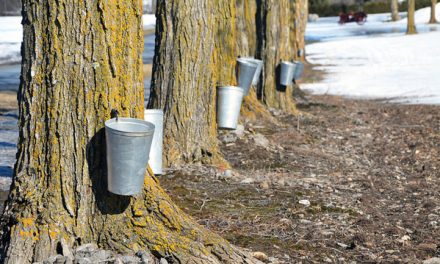In May of every year, hundreds of thousands of visitors enjoy the Canadian tulip festival. Al-Rajab Photo
OTTAWA – The Canadian tulip festival is one of the largest tulip festivals in the world. It announces the arrival of spring with over a million tulips of 100 varieties displayed across the capital’s region for 11 days, from May 12 to 22. Over 300,000 tulips of different varieties will be displayed at Commissioners Park at the Dows Lake section of the Rideau Canal. The admission free event attracts over 700,000 visitors each year except during the pandemic when fans were asked to stay home and experience a virtual walking tour due to the Covid level grey.
Tulip history
Tulips belong to the lily family (Liliaceae), which has over 700 species native to central Asia and was originally cultivated in the Ottoman Empire (Turkey). The botanical name of tulips, Tulipa, is derived from the Turkish word “tulbend or turbin” because the flower has the similar shape to the Turkish hat. At the end of sixteenth century, tulips were imported into Holland and became popular. Rapidly, they became a major trading product in Holland and other parts of Europe.
In the mid-seventeenth century, tulips were so popular that it created the first economic bubble in Holland known as “Tulip Mania or Tulip Craze”. At that time, tulip bulb prices were so high, and they were used as a form of money. A handful of bulbs were more expensive than a house. The tulips market crashed later because of oversupply.
During the Dutch famine of 1944 in the Second World War, people often had to resort to eating sugar beets and tulips’ bulbs. A fresh tulip bulb has a sweet milky flavour, while the dry bulbs have a bitter taste. There are different recipes available for the edible tulip petals. The bulbs are not recommended to eat. Some people are allergic to tulips because of their content of the chemicals substances tuliposides and tulipalins, which have been reported to pose antimicrobial, antifungal and insecticidal activities.
Tulips are still very popular in the Netherlands, which is considered as the largest producer of tulips in the world with around three billion exported per year. In 2021, approximately 14,400 hectares of farmland in the Netherlands were dedicated to the production of tulip bulbs.
The Canadian tulip festival celebrates Canada’s role in the liberation of the Netherland in the Second World War. After the war, the Dutch princess Juliana offered 100,000 tulip bulbs to Canada as a symbol of gratitude. Since then, the Dutch royal family sends 10,000 tulip bulbs to Ottawa every year.
Growing tulips
Tulip bulbs are planted in the autumn before the ground freezes. Tulips prefer a sunny site and drained soil; the plants dislike the areas with excessive moisture. Bulbs are planted in soil 4 to 6 inches apart, and they must be watered directly after planting.
Depending on the variety, tulips may have different blooming times from early spring to late spring. Tulip flowers are usually cup-shaped; one tulip grows on each stem, with two to six broad leaves per plant which can reach the height of ½ to 2 feet. However, tall varieties should be protected from strong winds. There are 75 wild tulip species and more than 3,000 varieties created by selective breeding.
A few pests may target tulips such as moles, squirrels, rabbits, mice, voles, slugs, and snails. In addition to aphids and nematodes, some diseases are reported on tulips such as gray mold and bulb rot. In general, a healthy plant with balanced fertilizing and well-drained soil resists most diseases. Striped tulips were very popular in the seventeenth century; it was a virus disease that was responsible for their colouring. This virus was discovered in 1931 and it is transferrable from one plant to the other by aphids. In recent years, coloured tulips are artificially bred to look that way.
More information can be found at the Canadian tulip festival website: https://tulipfestival.ca.













